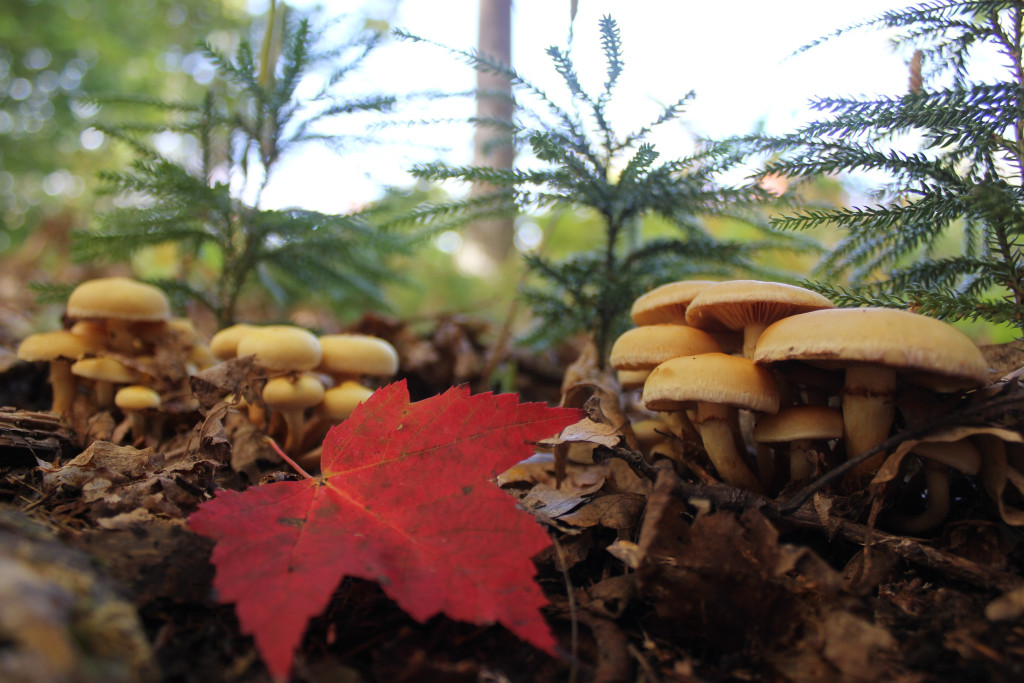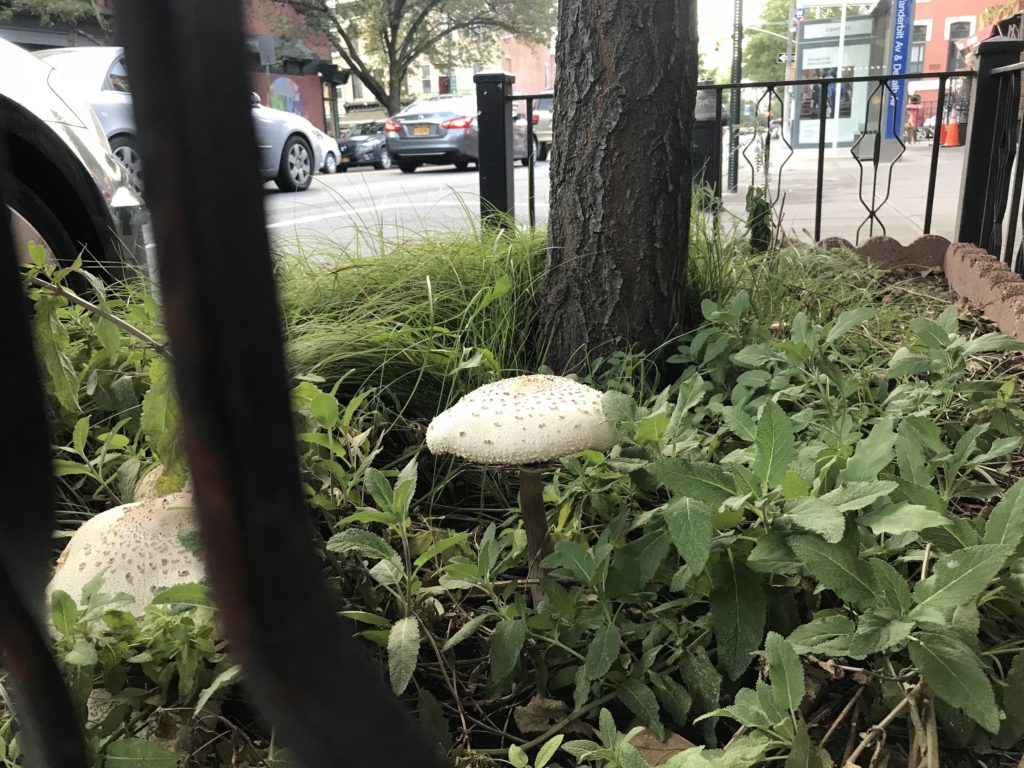
In a recent article in Atlantic Monthly Magazine entitled Death Cap Mushrooms Are Spreading Across America, the author details how deadly amanitas are popping up all over cities and being eaten by city people because they are tasty, and I find it highly intriguing, being a former city girl, gone country.
Some naturalists theorize that man was “created” by the natural world, or Mother Nature, as a smarter, better way to spread seeds across the world in order to more successfully propagate forests – a sort of supreme effort by trees at world domination, if you like. If this is so, we turned the tables on this activity a few hundred years ago and in terms of the history of the planet that’s pretty recent.
To risk stating the obvious, we have stopped being useful to the trees. We have been chopping them down at an alarming rate for hundreds of years. A good way to get rid of us as a species, should they have the capacity to decide, would be to grow very tasty, highly poisonous mushrooms in abundance on the ground, ones that don’t affect local animals – only us as a species. Might the trees be trying to kill city dwellers?
In the last few years, ancient ideas have started to become mainstream: the secret life of trees and plants. According to naturalists and scientists, plants communicate with each other through a network of fungus (mycelium) through which they also feed and heal each other or even sabotage each other like the Black Walnut tree; they feel pain; they respond to attacks; they can hear the buzz of animals. Anecdotally, I’ve heard from naturalist friends here in the Catskills that they emit sounds that can be captured on instruments. In the BBC article to which I’ve linked above, the movie Avatar is declared “surprisingly accurate”. There are a plethora of books, easily found online, about this hitherto unproven hidden life of trees and plants. If they have been sentient beings all this time, then it stands to reason that they’d be keen to get rid of the most annoying, detrimental or completely useless of us human beings and begin again.
It’s a compelling notion, especially for a city girl turned country like me who now owns thousands of (alive and well) trees: pine, hemlock, spruce, cherry, oak, beech and a great deal of maple all covered in lichen that you wouldn’t find in polluted areas and surrounded by a multitude of assorted mushrooms. I was raised and lived in a city of most of my life, until recently. It’s pretty unnatural, but appears to be essential for a national economy that basically based on shopping (consumer activity). Just the amount of waste it’s possible to produce in a short visit to New York City is remarkable. Seeing peeled oranges offered for sale in plastic boxes is depressing if you thought that we were going forwards not backwards in the fight against single-use plastics. There are articles detailing how there are “fat bergs” in New York City sewers caused by fat and disposable wipes that are becoming difficult to destroy. Rumors abound that the city, and the country, is running out of places to send its garbage. New York City sucks up our precious Catskills water like its got a hangover.
Is the idea that city trees are trying to kill off unwary city folk, who know nothing about poisonous mushrooms, so outlandish?
Have you ever hugged a whopping, 100-year old hemlock? It’s difficult to disengage once you latch on with your spindly little fleshy limbs. I’ve watched visitors to my Catskills home in the last week barely able to peel themselves off such a mighty, towering image of strength and grace. Did my trees compel me to rescue a dog for the extra pee he could provide? Did the pines whisper to me in the night as I walked my my beloved pet after dark: “start having frequent guests so that your friends can come over here and drop us a load of carbon”? I’m beginning to wonder because I’ve had a lot of guests recently and they’re all allowed to pee in our forest. The local hiking community thinks hikers should pick up the dog poo, but I’m certain that the trees want me to leave it there.
Am I going mad? Possibly. (I mean, if so, it’s in the best possible way, I think). Do your own research and report back. Meanwhile… you’ll find me in the forest.
End Note: A ‘Shroom Grows in Brooklyn
On occasional visits to New York City, I’ve also been startled to see toxic amanitas growing under trees on the street in Brooklyn. (See the picture below). Do not eat them! Do not even touch them. They cause death by liver damage. They are one of the most toxic mushrooms known to man and take up pages and pages of warning notes in my guide book because there are so many versions of them.
For more information: consult Mushrooms of the Northeast by Teresa Marrone and Walt Sturgeon.

“What a piece of work is man” – and woman. Once we cherished people, humans, as the highest work of creation, the epitome of nature’s true grace. Renaissance, Enlightenment, rise of science, all pointed to the glory that is humanity. Now, trees replace people as the height of cool.
Gotta say, I don’t get it.
But I do send love.
Well, they do give us oxygen.
@ J.N.- Lovely musings for the eve of the Vernal Equinox. You give warning of the Power that is Mother Nature and temper it with Gratitude for provides. xo
@Mr. Birns – Trees are way cooler than people. They do not stand in judgment despite being in a position above most living things. They are the essence of loyalty, resilience and generosity. They give many living things homes, oxygen, nutrition, hydration, fuel, and even hope. People, selfish and small, taking more than they give more often than not, pale in comparison.
Edit: “Gratitude for all She provides.”